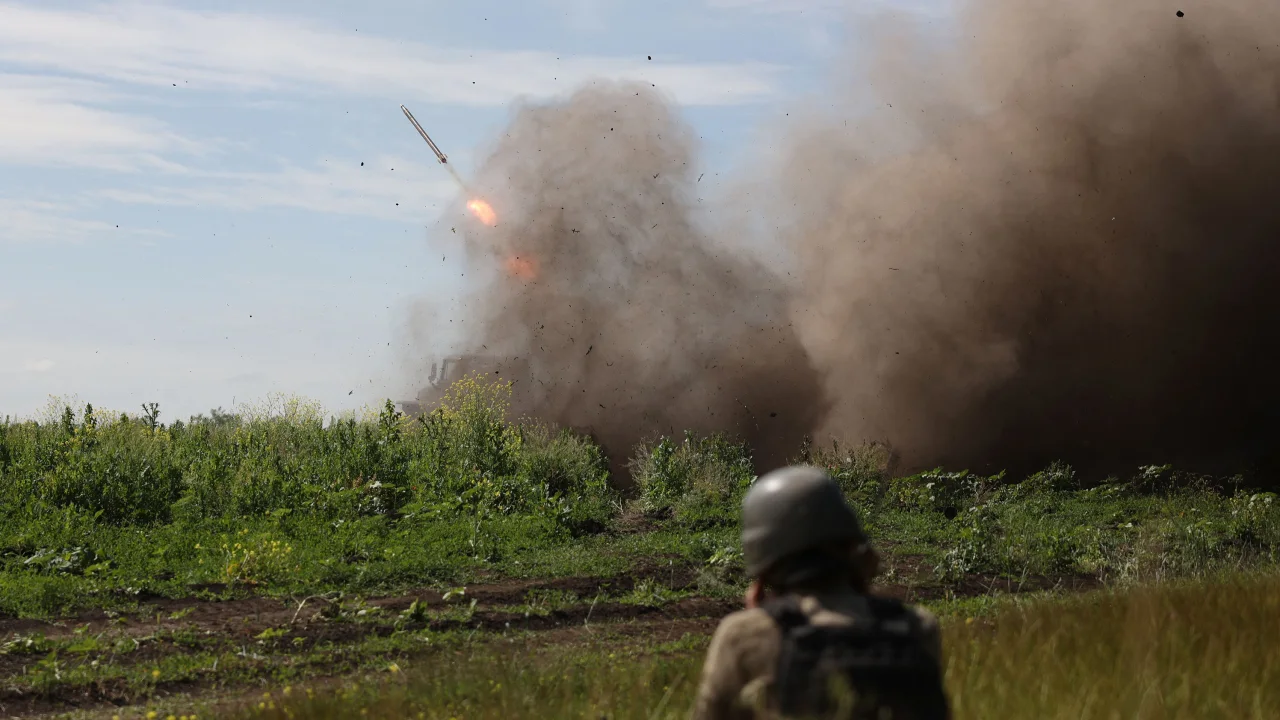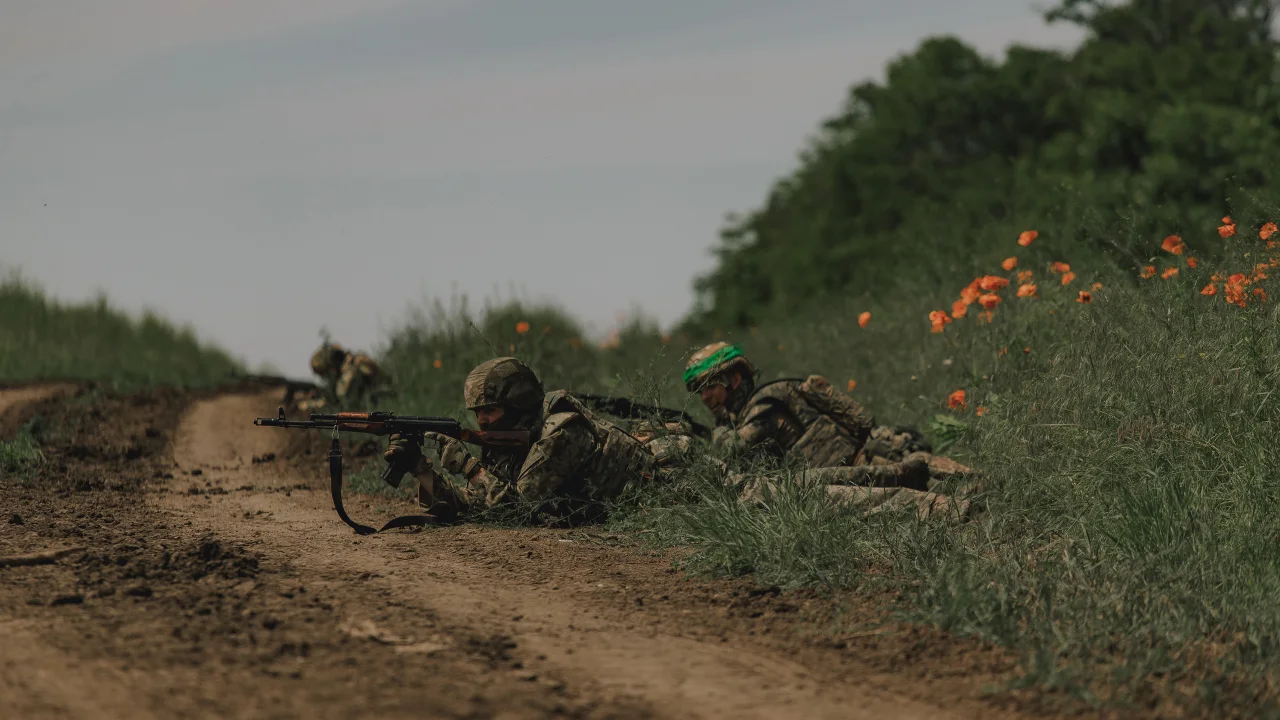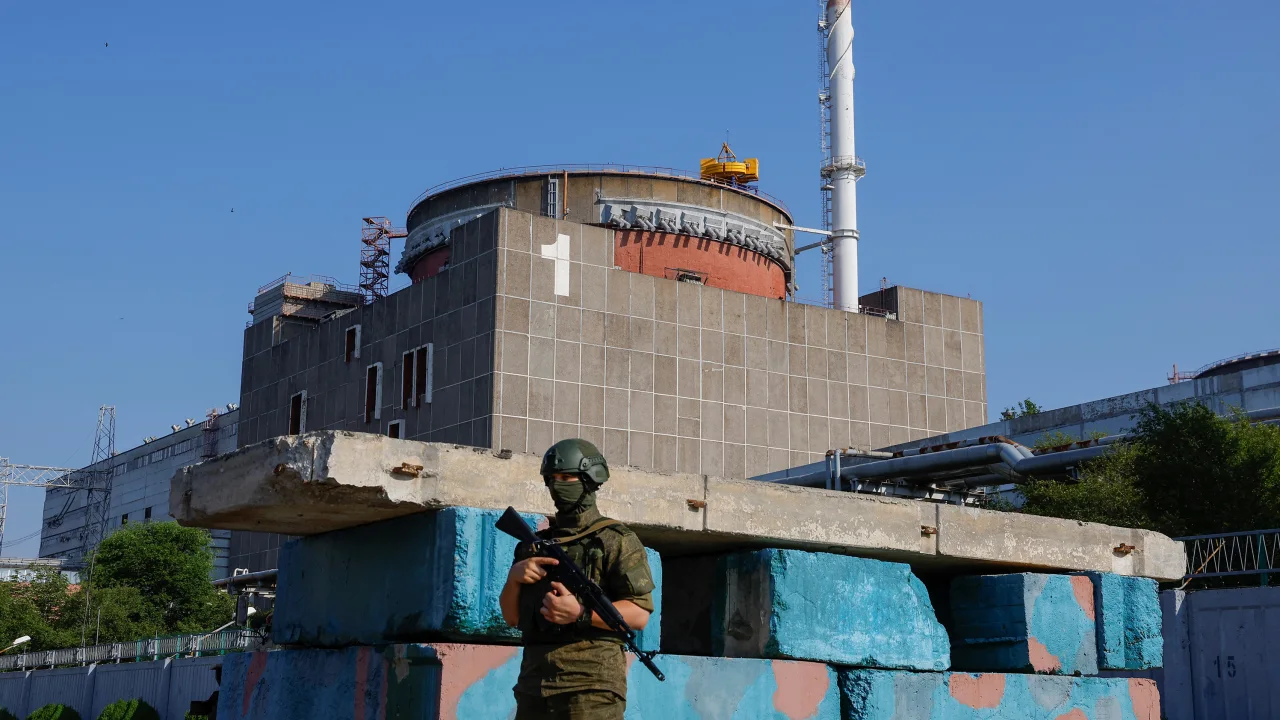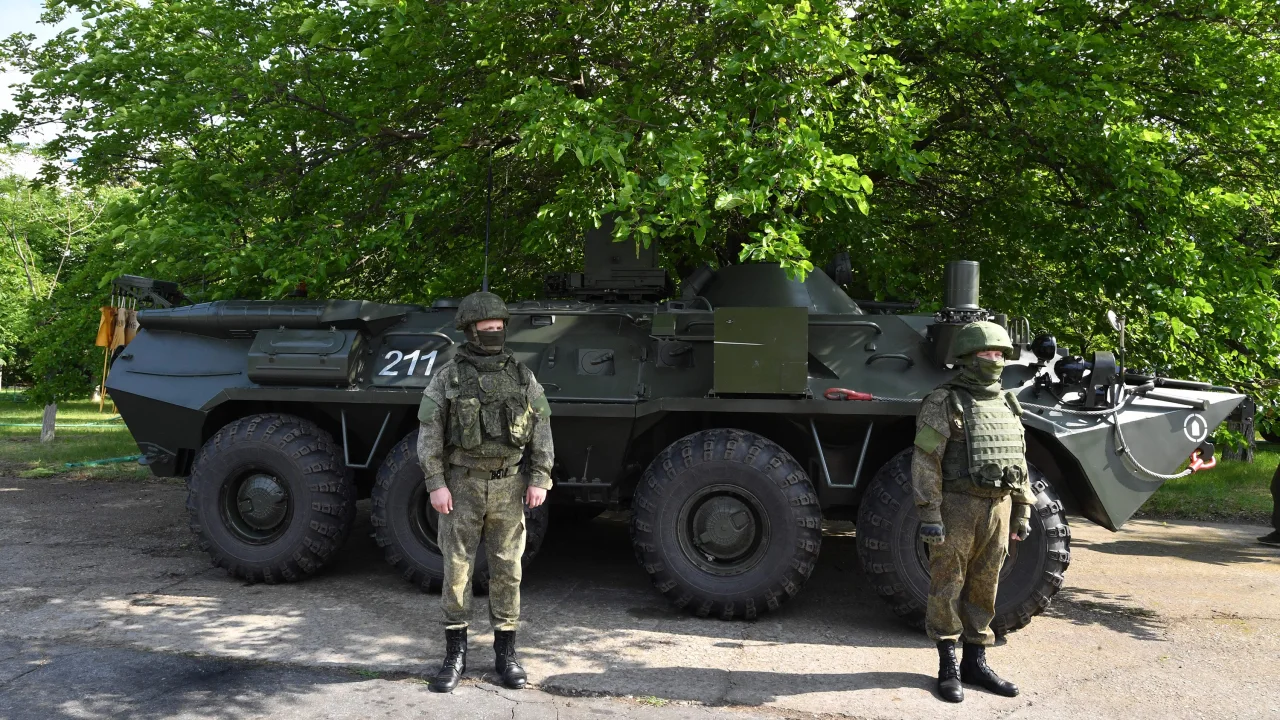News
Ukraine’s Counteroffensive Against Russian Forces Remains Stalled – What Happened So Far
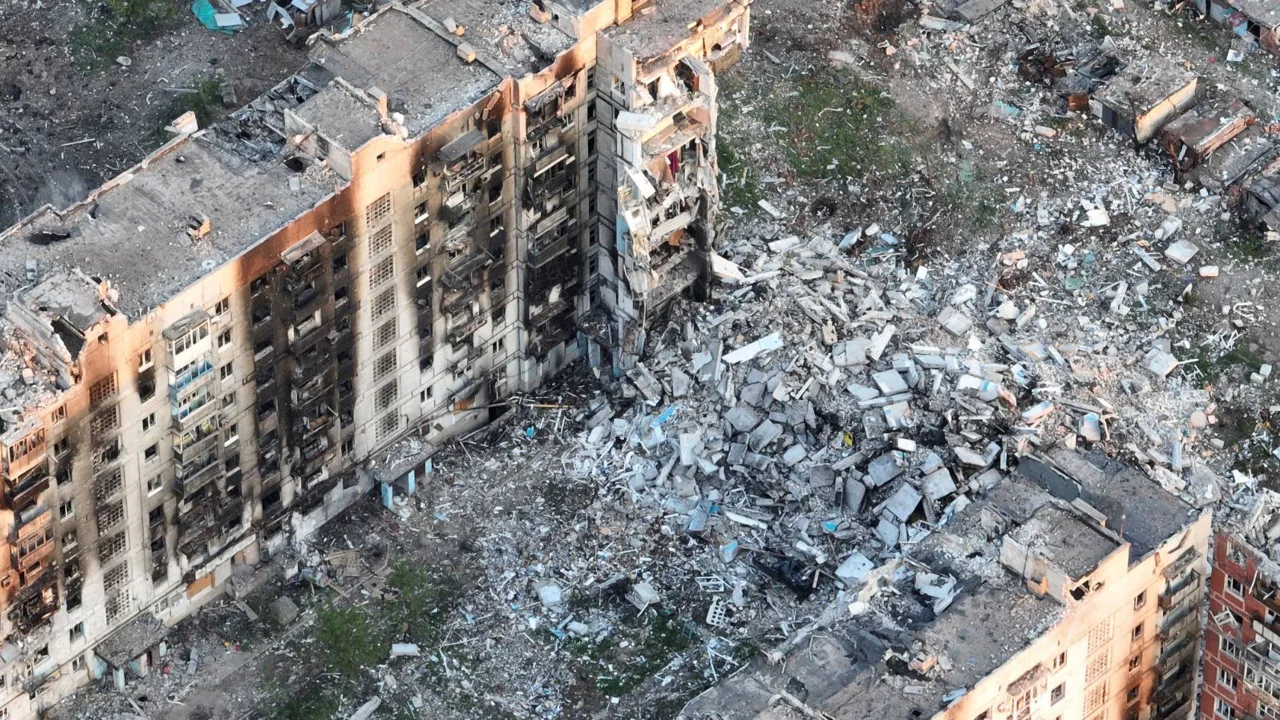
(CTN NEWS) – The counteroffensive launched by Ukraine against Russian soldiers has not yet gotten the traction that some unduly optimistic commentators had predicted. It seems to be setting for a bigger act so far.
The southern provinces, including Zaporizhzhia, have seen minor gains from offensive operations so far, but multi-layered Russian defences have proven difficult to penetrate.
As it would mean severing Russia’s land-bridge between occupied Crimea and eastern Donetsk, the region is viewed as a strategic priority for Ukraine.
However, there are also indications that Ukrainian forces are hedging their bets, attempting to reverse Russian gains around Bakhmut, and taking advantage of what they see as weaknesses elsewhere in the east.
The Ukrainians seem to be trying to drag Russian units in multiple directions, figuring out which might be weak or exploiting lines dividing different battalions, rather than making a show of overwhelming power that concentrates freshly formed brigades in one direction.
Ukrainian Forces 1st Goal
The primary objective, according to Mykhailo Podolyak, an adviser to the head of the Ukrainian President Volodymyr Zelensky’s office, was to eliminate as many Russian draftee units as possible and “increase the psychological pressure on the Russian army.”
He added that Ukrainian forces are “testing at the same time to see which areas are the weakest.”
In order to make the Russians commit additional troops to defend a city they took more than six months to destroy and occupy, this has included new assault operations surrounding Bakhmut.
According to Oleksandr Syrskyi, the commander of the Ukrainian Land Forces, the Russians “continue to move some of the most combat-ready units to the Bakhmut direction.”
Perhaps more unexpectedly, there are signs that the Ukrainians are making headway south of what has historically been the equally immobile but highly energetic Vuhledar front as well as close to the city of Donetsk, where the line of contact has long been frozen.
The Russians must attempt to defend a meandering front line that is nearly 1,000 kilometres (621 miles) long and contains some units that have already been attacked and repaired, while the Ukrainians have the luxury of choosing the targets for their attacks.
Nevertheless, it is a difficult task since, crucially, Ukrainian forces lack air superiority and must launch a frontal attack against well-prepared defence positions in the south.
There was never a chance that the Ukrainians would make the kind of lightning gains they did in Kharkiv last autumn; the Russians have had months to strengthen defences here.
Study of War Take-Aways
It’s way too early for takeaways, according to the Institute for the Study of War.
This week, it stated that “the vast majority of Ukraine’s counteroffensive forces have not yet been committed and Russian defenses are not consistently strong along all sectors of the front line.”
At this early point, there are, in Matthew Schmidt’s opinion, more problems than there are solutions. Schmidt is an associate professor of national security at the University of New Haven.
The Russians “Are they responding strategically? Are they deploying soldiers and supplies as if the current area of conflict is the major objective? he asks.
“Only around 25% of the entire Ukrainian force appears to be involved; what are the other 75% doing? Are the Russians uncertain about their intended use?
The Ukrainians will be hoping that the Russian military command, which is now directly in charge of the soldiers in Ukraine and is led by Chief of Staff Valery Gerasimov, will make some bad decisions.
According to Mick Ryan, a former commander in the Australian military, “There is an old saying that ‘when your enemy is making mistakes, don’t get in their way.'”
Gerasimov has a history of making strategic errors, not the least of which was the poorly planned initial assault in February 2022.
High Use Of Anti-Tank Munitions
The Ukrainians have been losing mine-clearing tanks and other armour as they attempt to break through, and it appears that the Russian strategy for protecting their lines in the south is working reasonably well so far.
Open-source video that is accessible reveals that heavy anti-tank ammunition use is having an adverse effect on Ukrainian front-line units.
“A first [Russian] echelon of forces repels or slows attacking forces before a second echelon of forces counterattacks against any enemy breakthrough,” according to the Institute for the Study of War (ISW) in Washington.
While obstacles can be successfully avoided using mine-clearing vehicles, bulldozers, mine ploughs, and other engineering equipment.
It becomes difficult to do so in the presence of drones that provide real-time data to enemy artillery and aviation, according to a Ukrainian officer who acknowledged the problem in a written statement.
It’s important to note that Russian units from the 58th Combined Arms Army are among the most effective in the military in one hotly disputed region.
According to Matthew Schmidt, associate professor at the University of New Haven, the Russian air force may play a crucial role in the upcoming weeks after a lacklustre performance thus far.
The effectiveness of their use of glide bombs will determine that. Can they fly their rotary aircraft safely? Is their Air Force back in the fray because they’ve figured out how to defeat Ukrainian air defences, in other words?
A senior Ukrainian military told CNN on Friday that it was difficult to advance because of Russian airstrikes and artillery.
“Their aviation operates in waves, just as it did in Afghanistan and Vietnam.
They work continuously, non-stop, all day long, either from helicopters or aeroplanes, according to a deputy battalion commander with the Separate Territorial Defence Brigade who spoke to a CNN crew close to Zaporizhzhia.
Additionally, he emphasised Ukraine’s lack of airborne resources.
“Aviation support is sorely lacking,” he declared.
Ukrainian units in the area had to adjust, frequently dispersing into smaller formations that were harder to spot.
Schmidt said the Ukrainians will need to pick things up quickly. Are soldiers acquiring the skills necessary to successfully penetrate Russian defences so that they may instruct and guide the next wave of the offensive?
The success of the counteroffensive’s major thrust depends on this learning effect.
“We are advancing, forcing the enemy out of positions, not as quickly as we would like, but we are moving forward,” the Ukrainian commander told CNN. The enemy is already frantically dumping reserves here in several spots.
If this is accurate and widely reproduced, Russian forces might be too dispersed to mount a successful defence.
Russians In Nearly 18 Months Of Conflict
It’s safe to say that after over 18 months of fighting, the Russians have learnt some difficult lessons.
Because precision-guided munitions require GPS coordinates, Russian military bloggers, who are frequently critical of the military’s performance, have praised the employment of electronic warfare capabilities that have interfered with Ukrainian communications and targeting.
This week, the Institute for the Study of War stated that while it is “unclear if continued successful Russian EW tactics are a result of superior capacities or improved Russian employment of these systems,” there is some evidence to suggest that they have turned into a top target for the Ukrainians.
However, a lot of what counts in the upcoming weeks will depend on things that happen far away from the front lines.
The judgements and survival of mid- and senior leaders on both sides, as well as the Ukrainian targeting of rear sites such as command centres, ammunition and fuel dumps, will have an impact on Russian capabilities.
In addition to writing the blog Futura Doctrina, Mick Ryan also closely monitors the conflict. According to Mick Ryan,
“if they can limit fuel and ammunition availability for Russian combat forces, the Ukrainians will restrict Russian responses to their tactical or operational penetrations and constrain the mobility of Russian reserves.”
We won’t even be able to watch the counteroffensive develop live. There will be bits and pieces of data, often days-old geolocatable footage, but confidentiality will be crucial for both parties.
As a Ukrainian officer put it, “Operational success is not just capturing positions, but also maintaining momentum and moving forward after breaching enemy defences.”
The trajectory of that momentum will tell the tale of Ukraine’s attempt to seize authority. The extent of its development may well alter the course of the conflict and have an impact on how it ends.
By the time Ukraine’s anticipated offensive is over, according to foreign policy veterans Richard Haas and Charles Kupchan, Kyiv “may also warm to the idea of a negotiated settlement, having given its best effort on the battlefield and facing growing constraints on both its own manpower and help from abroad.”
They claim that Ukraine will fall well short of defeating Russian soldiers, even if the West increases military aid.
Others say that Ukraine has no choice except to strike the Kremlin hard, which may ultimately include taking back Crimea (or at the very least making it into purgatory for the Russians).
Despite the fact that some observers view this as a dangerous fantasy, others contend that only such a humiliation will stop the Kremlin from engaging in new hostilities.
In conclusion, few would argue that this is the final war.
If the attack is successful in driving Russian forces from Ukrainian territory, according to Ukrainian Foreign Minister Dmytro Kuleba,
“It will be the last. There will be more if not. If our access to weapons is interrupted, Ukraine will simply switch to a lower-intensity battle.”
RELATED CTN NEWS:
Thai Stock Market Remains Under Pressure From Domestic Political Uncertainties
Hatch Act: Its Significance, Implications & Who Has Violated The Hatch Act?
Biden Administration Announced New $325 Million Military Assistance Package For Ukraine

